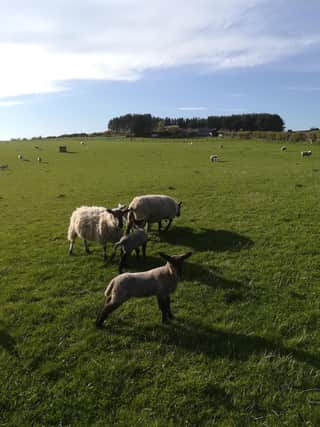FARMING: Some things never change!


Although many of our farmers are still in the thick of the lambing period, for others lambs are now 1 to 2 months old and hopefully skipping around the fields enjoying the recent sun. Our attention now turns to preventing any setbacks that would undo all the hard work in getting them to this stage.
One of the main issues over the next month or so in lambs is clostridial (a type of bacteria) disease causing sudden death, often in lambs that appear to be thriving. Hopefully most ewes were vaccinated 4-6 weeks pre-lambing in order to provide immunity to lambs through their colostrum. Many farms find that as soon as this immunity wanes, lambs begin to succumb to disease and so their own vaccination courses are started from 3 weeks old.
Advertisement
Hide AdAdvertisement
Hide AdAnother major issue which varies a little from year to year is scour in lambs and it’s important that we identify the cause before treating large batches of lambs. The usual causes in lambs at this age are either coccidiosis (a protozoan parasite carried by many sheep and
found mainly in wetter fields) or Nematodirus (an intestinal worm that can cause sudden death even before its eggs are detectable in faecal samples). In both cases, these parasites strip the gut of its lining therefore reducing the absorptive capacity leading to scour. If not
treated promptly, this can cause death or long-term ill thrift as the gut doesn’t fully recover.
The treatments for each of these parasites is very different so it’s always worth checking a faecal sample. Although we’re currently working with a skeleton of staff due to the virus, we are still encouraging farmers to drop off samples for testing before guessing at the treatment.
Advertisement
Hide AdAdvertisement
Hide AdIdeally 10 separate samples of at least 3g per animal from each group is what we need but anything is better than nothing! We pool these samples together at the surgery and can provide results within 24 hours. Sometimes we find that egg counts are very low and the
scour is actually nutritional. As you would expect given the recent dry weather, coccidiosis diagnoses are few and far between but it’s been a year for early Nematodirus outbreaks.
As always, acting early is always better. Faecal analysis can never be 100% accurate but it’s much better to pick up problems this way than to wait until a post-mortem is required!